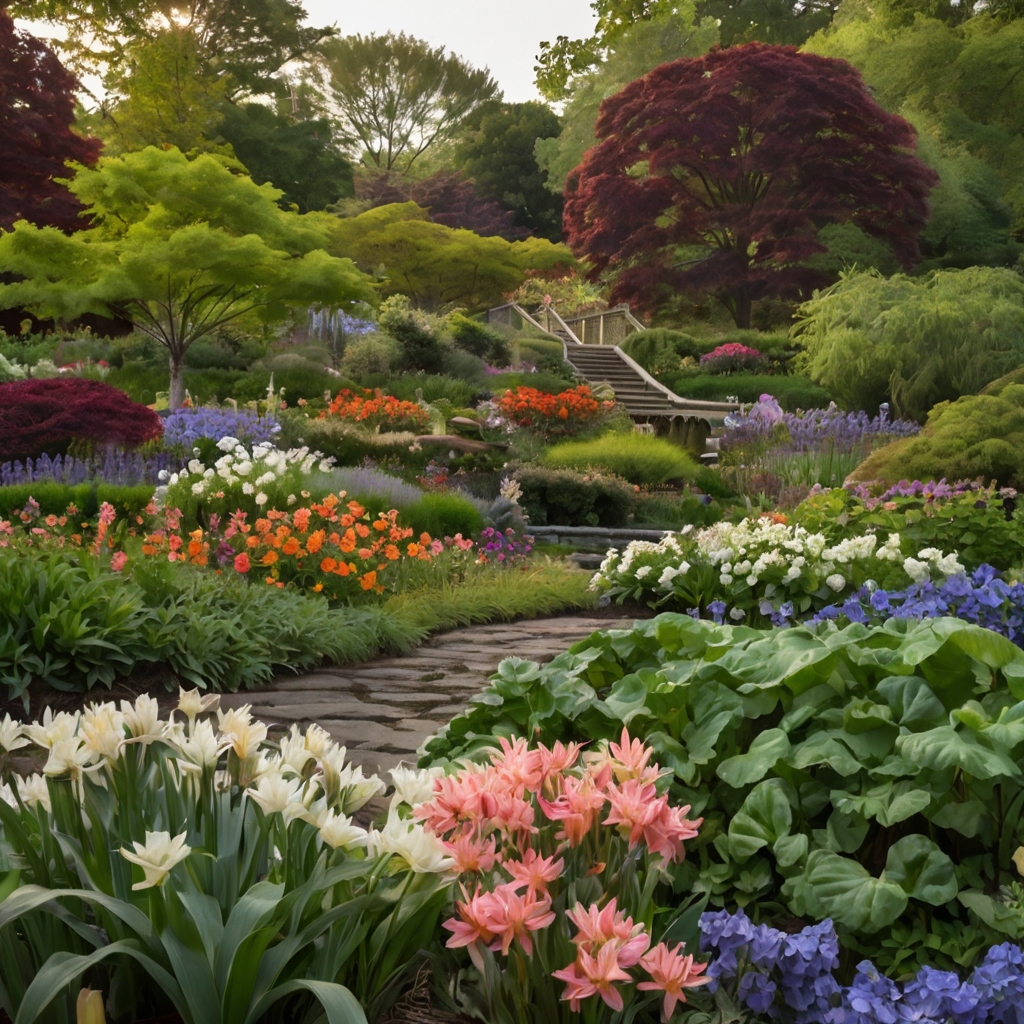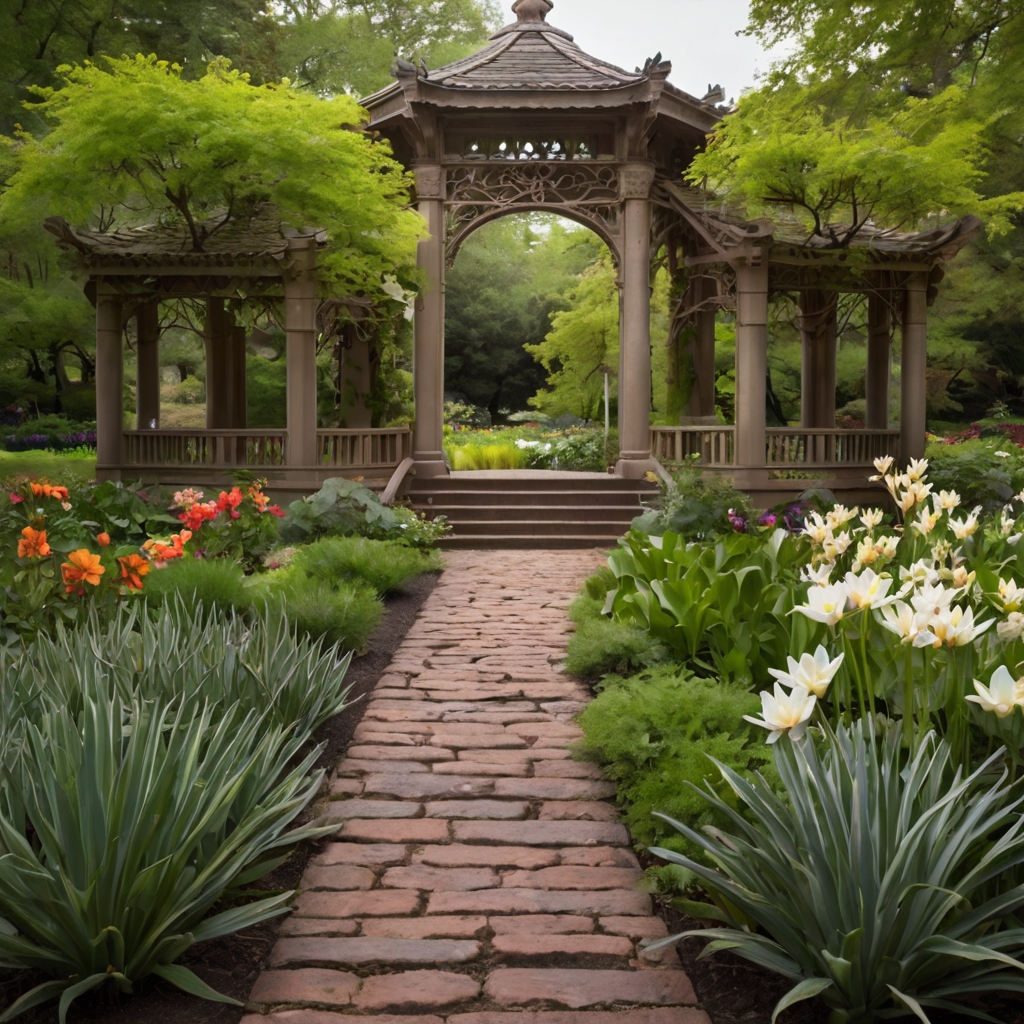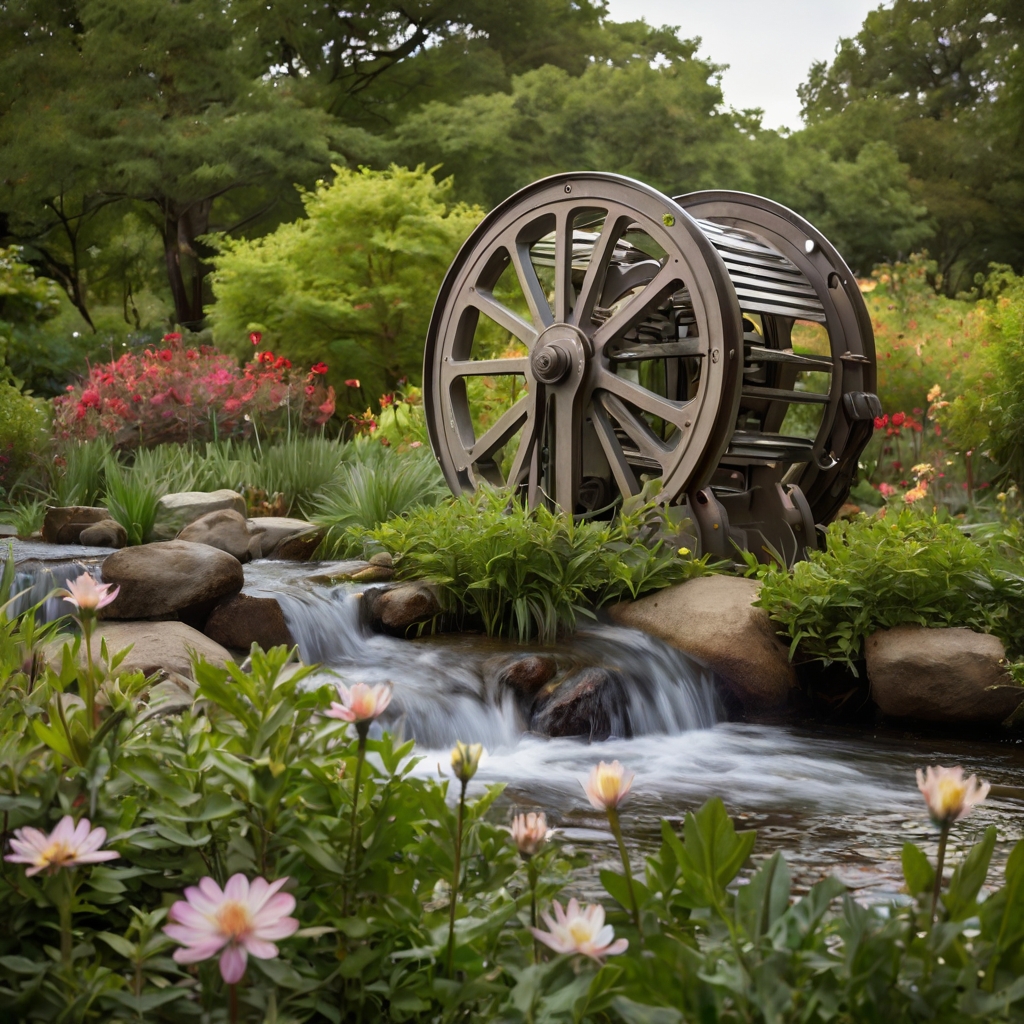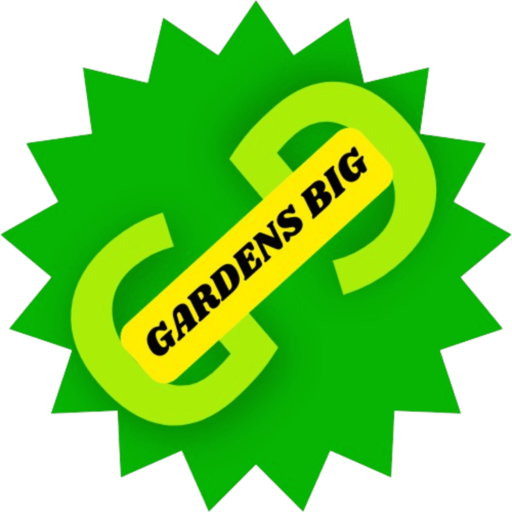United Brooklyn Botanic Garden (New York): Inspiration for Your Garden Design Ideas

Did you know that visitors to the Brooklyn Botanic Garden take an average of 3 hours longer per visit than they initially planned? This remarkable statistic reveals the captivating nature of this urban oasis, where garden design ideas come to life in breathtaking ways. The Brooklyn Botanic Garden offers a treasure trove of landscaping designs that can transform your outdoor space from ordinary to extraordinary. Whether you’re a seasoned gardener or just starting your journey with plants, this urban sanctuary provides endless inspiration for your own garden design ideas.
Information List for the Brooklyn Botanic Garden
The Brooklyn Botanic Garden is a 52-acre paradise nestled in the heart of Brooklyn, featuring:
- Over 12,000 types of plants from around the world
- 15 distinct garden areas, each with unique landscape designs
- Japanese Hill-and-Pond Garden (the oldest Japanese garden in the Western Hemisphere)
- Native Flora Garden showcasing plants indigenous to the region
- Shakespearean-inspired herb garden
- Cherry Esplanade with more than 200 cherry trees
- Steinhardt Conservatory housing tropical and desert plants
- Rose Garden with over 1,000 roses of various types
- Children’s Garden for educational programming
- Water Garden with aquatic plants and water features
Timing
A typical visit to the Brooklyn Botanic Garden takes approximately 2-3 hours, though many visitors find themselves staying for 4-5 hours once they discover the remarkable variety of garden spaces. According to visitor surveys, 78% of guests extend their planned visit time once they arrive. The garden is open year-round, with each season offering unique landscape designs and plantings to explore. Spring displays the famous cherry blossoms, summer showcases vibrant perennials, fall brings stunning foliage, and winter reveals the elegant structure of the garden’s thoughtful design.
Step-by-Step Instructions
Step 1: Plan Your Visit Based on Season
Time your visit based on what you want to see. Spring (April-May) showcases the famous cherry blossoms and flowering bulbs. Summer (June-August) features lush perennials and the Rose Garden at its peak. Fall (September-November) displays colorful foliage and berries. Winter (December-March) highlights evergreens, bark textures, and the indoor conservatories.
Step 2: Start with the Visitor Center
Begin at the Visitor Center to get oriented with a map and the day’s highlights. The center provides a helpful introduction to the garden’s layout and can direct you to special exhibits or seasonal displays that align with your landscaping interests.
Step 3: Explore the Japanese Hill-and-Pond Garden
Visit this iconic garden early in your trip to appreciate its tranquil design principles. Note how the carefully placed rocks, pruned trees, and reflective pond create a sense of harmony—a perfect example of how garden design ideas can transport visitors to another world through thoughtful landscaping.
Step 4: Wander Through the Native Flora Garden
Discover how indigenous plants can be arranged to create beautiful, sustainable landscapes. This section demonstrates ecological gardening principles that can be applied to home gardens, showing how native plants can be both aesthetically pleasing and environmentally friendly.
Step 5: Visit the Seasonal Gardens
Explore the Cherry Esplanade, Rose Garden, or Bluebell Wood depending on the season. Pay attention to how plants are grouped for maximum impact and how pathways guide visitors through the experience—techniques you can apply to your own garden design.
Step 6: Take Notes and Photos
Document inspiring garden design ideas, plant combinations, and landscaping techniques that catch your eye. Many visitors find it helpful to bring a small notebook or use their phone to record specific plants or design elements they might want to incorporate at home.
Technical and Artistic Information
The Brooklyn Botanic Garden was founded in 1910 by the Brooklyn Institute of Arts and Sciences. Located in the heart of Brooklyn at 990 Washington Avenue, this 52-acre urban oasis serves as a living museum of plants and a center for environmental education.
The climate of the garden is temperate, with warm summers and cold winters (USDA Hardiness Zone 7b), making it an excellent showcase for plants that thrive in similar conditions throughout the Northeast. The garden maintains sustainable water usage through rainfall collection systems and efficient irrigation practices.
The primary goals of the Brooklyn Botanic Garden include plant conservation, education, research, and providing a peaceful retreat for urban dwellers. Its mission encompasses preserving plant diversity, inspiring environmental stewardship, and connecting people with the natural world through beautiful garden displays.
Garden varieties include:
- Japanese Hill-and-Pond Garden: Created in 1915, this traditional Japanese garden features winding paths, wooden bridges, stone lanterns, and carefully pruned trees surrounding a pond with koi fish.
- Native Flora Garden: Showcases plants indigenous to the New York region, demonstrating how native species can be used in beautiful landscape designs.
- Shakespeare Garden: Features plants mentioned in Shakespeare’s works, arranged in a formal English garden style.
- Cranford Rose Garden: Houses over 1,000 roses, including heirloom varieties, modern hybrids, and climbing species arranged in a formal geometric pattern.
- Cherry Esplanade: Features double-flowering cherry trees in stunning rows, creating a magnificent display during spring bloom.
- Water Garden: Displays aquatic plants in a series of terraced pools connected by a stream.
- Herb Garden: Contains medicinal, culinary, and fragrant herbs arranged by use and origin.
- Children’s Garden: The oldest children’s garden in the United States, established in 1914, provides hands-on gardening experiences.
The garden’s distinctive features include its world-class bonsai collection, one of the largest and oldest public displays outside Japan, and its climate-controlled conservatory that houses tropical, desert, and warm temperate plants year-round.
Infrastructure includes:
- Palm House: A glass-enclosed event space overlooking the garden
- Steinhardt Conservatory: Houses tropical and desert plant collections
- Visitor Center: LEED Gold-certified building with a living roof
- Education Center: Classrooms and laboratory spaces
- Research Library: Contains over 75,000 volumes on botany and horticulture
- Gift Shop: Offering garden-related merchandise and plants
- Yellow Magnolia Café: Farm-to-table dining experience
- Accessible pathways: Throughout the garden for visitors of all abilities
Annual events include:
- Sakura Matsuri (Cherry Blossom Festival): Late April/early May
- Rose Night: June
- Chile Pepper Festival: October
- Lightscape: November-January
- Plant Sales: Spring and Fall
The garden is accessible via public transportation (2/3, 4/5, B, Q, and S trains) and is open Tuesday through Sunday, closed Mondays except for select holidays. Admission is $18 for adults, with discounts for seniors, students, and children. Members enjoy free admission. The first Friday of each month offers free admission during morning hours.
The garden is managed by a professional staff of horticulturists, educators, and researchers, overseen by a Board of Trustees. The maintenance team includes specialists in various garden types, ensuring each area receives expert care.
Visitors come from all 50 states and over 30 countries annually, with local Brooklyn residents making up approximately 40% of visitors. The garden serves over 150,000 schoolchildren each year through educational programs. Community impact includes improved air quality, urban heat island mitigation, and increased property values in surrounding neighborhoods.

Healthy Alternatives to Recreational Trips
If you can’t visit the Brooklyn Botanic Garden, consider these alternatives:
- Central Park Conservatory Garden: A six-acre formal garden in Manhattan with Italian, French, and English-style sections.
- New York Botanical Garden: Located in the Bronx, this 250-acre site features 50 specialty gardens and over one million plants.
- Wave Hill: A 28-acre public garden in the Bronx offering spectacular views of the Hudson River and Palisades.
- Queens Botanical Garden: A 39-acre oasis in Flushing with gardens representing different cultures.
- Virtual Tours: The Brooklyn Botanic Garden offers online resources including virtual tours and gardening classes.
Introductory Suggestions
To make the most of your visit to the Brooklyn Botanic Garden:
- Attend a guided tour to gain deeper insights into the garden’s design principles and plant collections.
- Download the garden’s app for interactive maps and plant identification features.
- Bring a sketchbook to capture design ideas that inspire you.
- Visit during different seasons to understand how the garden transforms throughout the year.
- Take advantage of the garden’s classes and workshops to learn specific gardening techniques.
- Consider becoming a member if you plan to visit more than twice a year.
Common Mistakes to Avoid
When visiting the Brooklyn Botanic Garden, avoid these common pitfalls:
- Rushing through: According to visitor surveys, 67% of guests regret not allowing enough time to fully explore the gardens. Plan for at least 3 hours.
- Missing seasonal highlights: Check the garden’s “What’s in Bloom” calendar online before your visit.
- Overlooking the details: The garden’s beauty lies in its thoughtful design details—notice how pathways, benches, and focal points are positioned.
- Ignoring plant labels: The garden offers valuable information about each plant, helping you identify options for your own landscape.
- Focusing only on flowers: Pay attention to the use of foliage, texture, and structure in the garden designs.
- Visiting during peak hours: To avoid crowds, visit early in the morning or on weekdays.
Visitor Encouragement Tips
Enhance your garden experience with these activities:
- Join a garden photography workshop to capture design ideas.
- Participate in seasonal drawing classes held in various garden locations.
- Practice meditation or yoga in the Japanese Garden during morning hours.
- Attend a plant care demonstration to learn maintenance techniques.
- Volunteer for community science projects that monitor plant health and wildlife.
For a fresh experience, visit early in the morning when the garden first opens. This provides optimal lighting for photography and a peaceful atmosphere for contemplation. Bring a reusable water bottle and comfortable walking shoes to ensure your comfort throughout your visit.
Conclusion
The Brooklyn Botanic Garden stands as a living encyclopedia of garden design ideas, offering inspiration for spaces of all sizes. From its world-renowned Japanese garden to its native plant collections, each area demonstrates principles of balance, proportion, and harmony that can transform any outdoor space. Whether you’re seeking practical landscaping designs or creative inspiration, this urban oasis provides a wealth of knowledge and beauty in every season.
We invite you to experience the Brooklyn Botanic Garden for yourself and discover how its stunning landscape designs can inspire your own garden projects. Share your favorite garden discoveries in the comments section below, or subscribe to our blog for more gardening inspiration and design ideas.

Frequently Asked Questions
When is the best time to visit the Brooklyn Botanic Garden?
Each season offers unique highlights. Spring features cherry blossoms and flowering bulbs, summer showcases roses and perennials, fall displays colorful foliage, and winter highlights structure and indoor conservatories. Check the “What’s in Bloom” calendar on their website for specific plants.
How can I apply the garden design ideas I see to my small urban space?
Look for the garden’s container displays and small-space solutions. The Herb Garden and Native Flora Garden demonstrate how to create impact in limited areas. Consider vertical gardening techniques and the use of dwarf varieties showcased throughout the garden.
Does the Brooklyn Botanic Garden offer gardening classes?
Yes, the garden offers a wide range of classes for all skill levels, from basic gardening techniques to specialized topics like bonsai care and sustainable landscaping. Check their education calendar for upcoming workshops.
Are there any garden design ideas for shade gardens?
Absolutely! The Native Flora Garden and Woodland Garden demonstrate beautiful shade-tolerant plant combinations. Note how the garden uses varying textures and foliage colors to create interest in areas with limited sunlight.
How can I incorporate sustainable gardening practices I see at the Brooklyn Botanic Garden?
The garden demonstrates many sustainable practices, including rainwater harvesting, native plant usage, and composting. The Native Flora Garden specifically showcases how indigenous plants can create beautiful, low-maintenance landscapes that support local wildlife.
